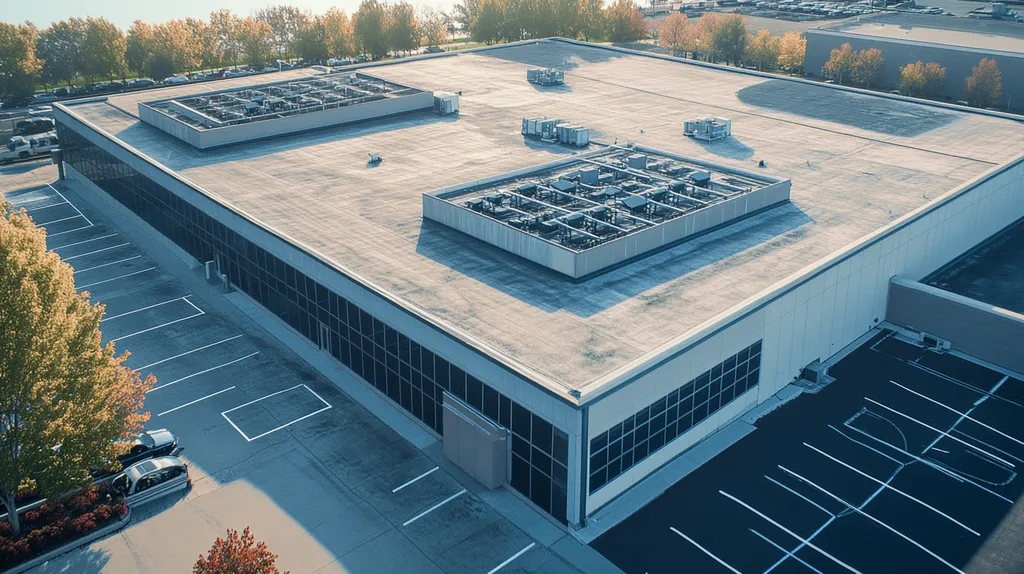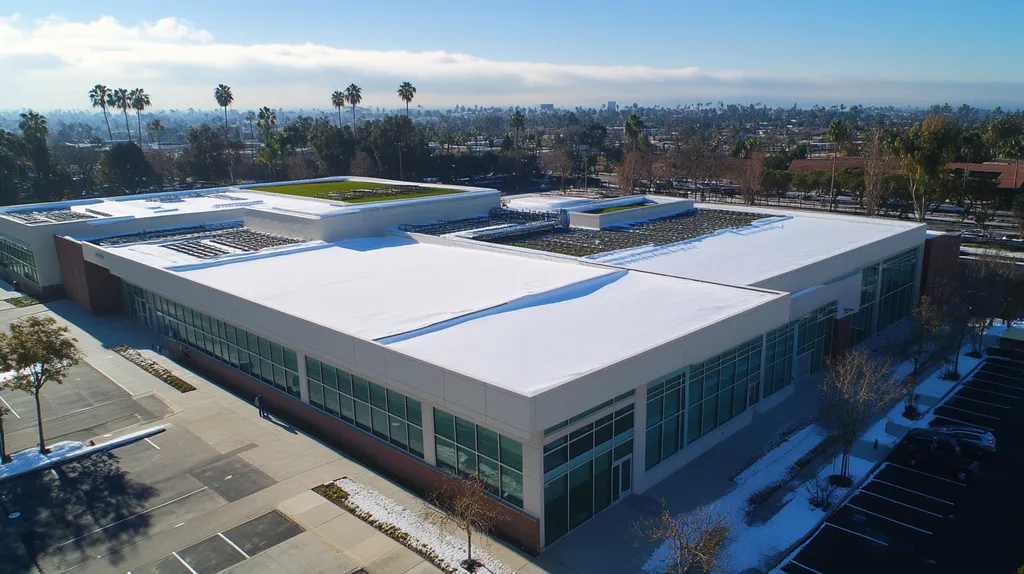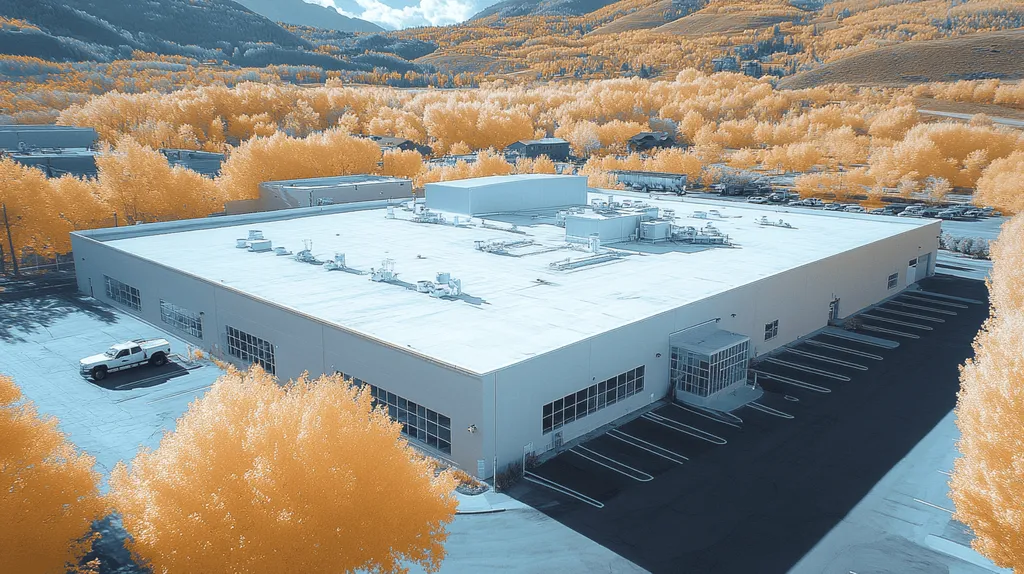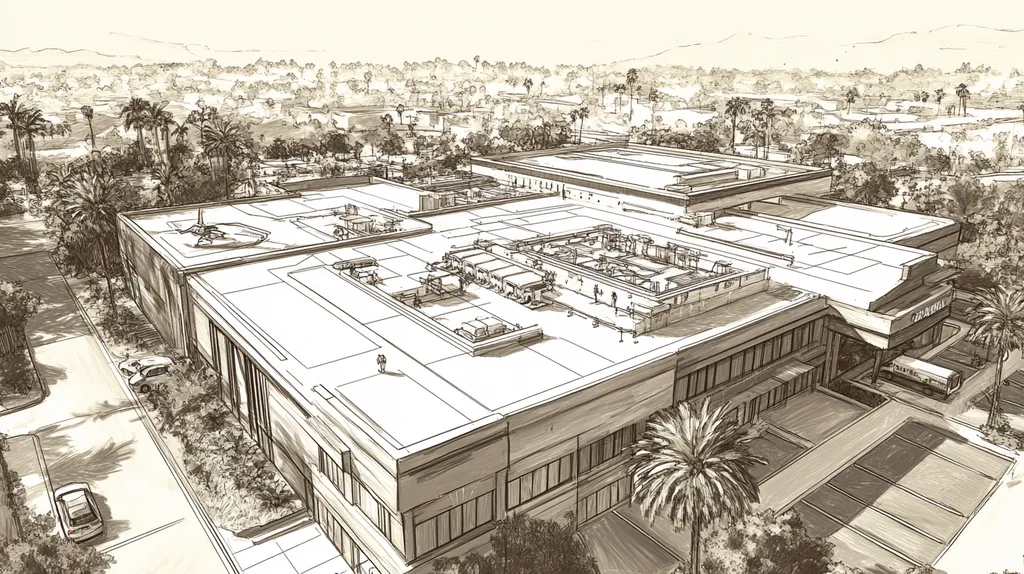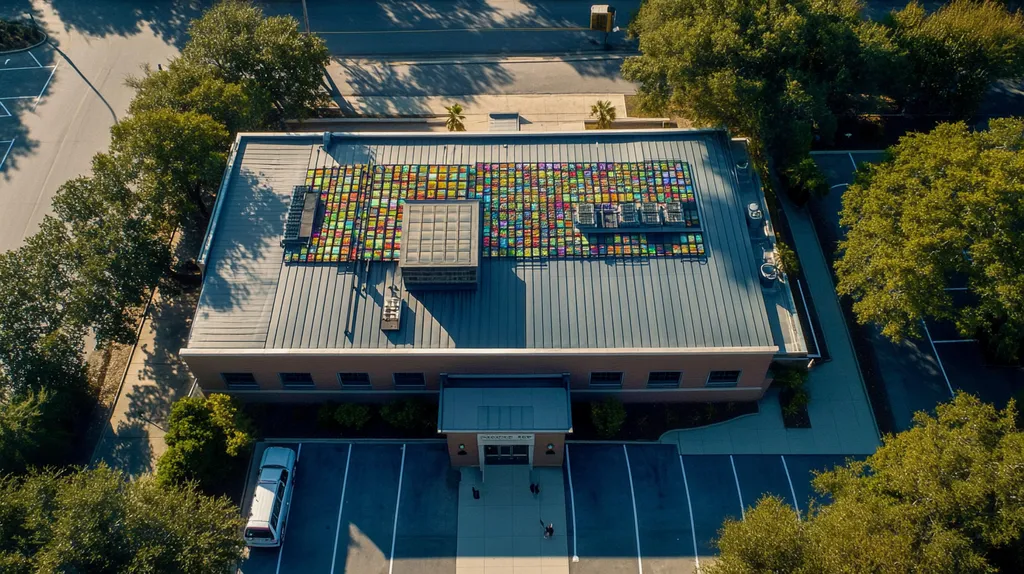Welcome to today’s Battle Royale featuring two roofing heavyweights: “Power Washing” in the east corner versus “Mechanical Scrubbing” in the west!
Tonight’s showdown pits these contenders against each other across six punishing rounds designed to test every aspect of their performance for Commercial Roof Preparation.
At stake? Millions in potential costs, decades of building protection, and the critical performance demands of modern commercial and industrial facilities.
Our professional judging panel will evaluate each round on technical merit, real-world performance, and value delivery. After all six rounds, we’ll declare our ultimate champion.
Ladies and gentlemen, facility managers and building owners… it’s time to rumble!
ROUND 1: INITIAL COSTS & INSTALLATION
Preparing a commercial roof for coating applications demands precision and attention to detail. The choice between power washing and mechanical scrubbing can significantly impact project costs, timelines, and ultimate coating success. Understanding these differences becomes crucial when planning roof maintenance projects that can affect building operations and long-term performance.
Material Expenses
The surface must be clean and dry for proper coating adhesion, with preparation methods varying based on roof condition. Proper preparation might require primers, patching compounds, and specialized cleaning equipment to achieve manufacturer specifications. (source: FacilitiesNet)
Power washing equipment represents a modest initial investment, typically requiring only the washer unit, water supply, and basic cleaning solutions. The simplicity of equipment needs helps control costs and reduces inventory management requirements.
Mechanical scrubbing demands a broader array of tools including industrial scrubbers, specialized brushes, and multiple cleaning compounds. These materials often come at premium prices due to their specific applications and durability requirements.
When comparing material expenses, power washing demonstrates a clear ADVANTAGE through lower equipment and supply costs.
Installation Complexity
Installation complexity directly affects labor requirements and project success rates. Power washing offers straightforward operation with minimal setup time and standardized procedures across most applications.
The technique requires careful pressure control and proper distance maintenance but can be mastered relatively quickly. Most crews can achieve proficiency with standard training and minimal specialized certification.
Mechanical scrubbing demands more technical expertise and physical effort. The process requires careful attention to scrubbing patterns, pressure application, and cleaning agent selection.
Due to its simpler execution and lower skill requirements, power washing gains the ADVANTAGE in installation complexity.
Project Timeline
Project duration impacts both direct costs and facility operations. Power washing covers large areas quickly, with minimal setup and breakdown time between sections.
The method allows for rapid progress across the roof surface, though drying time must be factored into the schedule. Most power washing projects can be completed in 50-75% of the time required for mechanical alternatives.
Mechanical scrubbing proceeds at a slower pace due to its manual nature. Each section requires methodical attention, increasing overall project duration and extending facility disruption.
For timeline efficiency, power washing claims another clear ADVANTAGE.
ROUND 1 WINNER: POWER WASHING
ROUND 2: DURABILITY & LIFESPAN
The durability and lifespan of commercial roof coatings directly impact facility maintenance costs and structural integrity. Industry data shows that improper surface preparation can reduce coating effectiveness by up to 60%, leading to premature failure and unnecessary reapplication expenses. Understanding how preparation methods affect long-term performance helps facility managers make informed decisions that protect their roofing investments.
Durability of Coating Adhesion
Surface cleanliness directly impacts how well coatings bond to the roof substrate. Clean the roof using a pressure washer or a hose and push broom to remove all dirt and debris before coating to ensure adhesion. (source: Do it Best)
Power washing provides thorough cleaning through high-pressure water streams that dislodge surface contaminants. However, this method can force water into microscopic surface imperfections, creating potential adhesion issues if not allowed to dry completely.
Mechanical scrubbing creates consistent surface contact that methodically removes contaminants while allowing for immediate visual confirmation of cleanliness. This method also helps identify surface irregularities that could affect coating adhesion.
For coating adhesion durability, mechanical scrubbing earns the ADVANTAGE.
Longevity of Coating Performance
A coating’s service life depends heavily on the quality of surface preparation. Poor preparation leads to coating separation, blistering, and premature degradation that shortens the protective lifespan.
Power washing can leave behind residual moisture and loosely adhered particles that compromise coating integrity. These hidden issues often manifest months after application through coating deterioration.
Mechanical scrubbing provides thorough agitation that breaks down and removes surface contaminants completely. This thorough cleaning creates optimal conditions for maximum coating lifespan.
In terms of coating longevity, mechanical scrubbing claims the ADVANTAGE.
Resistance to Environmental Stress
Roof coatings must withstand extreme temperature changes, UV exposure, and moisture cycles. The preparation method significantly influences how well coatings resist these environmental stresses.
Power-washed surfaces may retain microscopic contaminants that create weak points in the coating. These vulnerabilities become apparent as weather exposure causes localized coating failures.
Mechanical scrubbing creates a uniformly clean surface that supports consistent coating thickness and adhesion. This thorough preparation helps coatings maintain their protective properties longer under harsh conditions.
For environmental stress resistance, mechanical scrubbing takes the ADVANTAGE.
ROUND 2 WINNER: MECHANICAL SCRUBBING
ROUND 3: PERFORMANCE FACTORS
Performance factors in commercial roof preparation directly impact coating success and long-term roof protection. Surface preparation methods must achieve thorough cleaning while preserving roof integrity and maintaining project efficiency. The stakes are high – inadequate preparation leads to coating failures that can cost facility owners tens of thousands in repairs and replacements.
Effectiveness of Cleaning
A power wash is often recommended to remove surface contaminants for optimal coating application. This method efficiently strips away loose debris and dirt through concentrated water pressure. (source: Roofline Inc.)
However, power washing may struggle with stubborn contaminants like oils or industrial residues. The high-pressure water can also force contaminants deeper into porous surfaces rather than removing them completely.
Mechanical scrubbing provides consistent physical agitation that breaks down and removes even heavily embedded contaminants. The direct contact ensures thorough cleaning of all surface irregularities.
For thoroughness of contaminant removal, mechanical scrubbing earns the ADVANTAGE.
Impact on Roof Integrity
The preparation method must clean effectively without compromising the existing roof structure. Power washing applies significant force that can damage aging or compromised roofing materials.
Even with careful pressure control, power washing risks forcing water into small cracks or separations. This intrusion can lead to subsurface damage and accelerated deterioration of roofing components.
Mechanical scrubbing allows for precise control of applied pressure and cleaning action. This method minimizes the risk of structural damage while still achieving thorough surface preparation.
When considering impact on roof integrity, mechanical scrubbing claims the ADVANTAGE.
Labor and Time Efficiency
Project timelines directly affect facility operations and overall costs. Power washing covers large areas quickly with minimal setup time between sections.
The speed of power washing must be balanced against required drying time. Weather conditions can significantly extend this drying period, potentially offsetting initial time savings.
Mechanical scrubbing demands more labor hours and physical effort to achieve thorough cleaning. While this method provides immediate quality control, it proceeds at a slower pace.
For overall efficiency in time and labor, power washing takes the ADVANTAGE.
ROUND 3 RESULTS: TIE
ROUND 4: MAINTENANCE REQUIREMENTS
Surface preparation methods directly impact long-term maintenance costs and coating performance for commercial roofing systems. Poor preparation choices can lead to premature coating failure, requiring expensive reapplication and risking structural damage. The stakes are particularly high for facility managers, as improper preparation can reduce coating effectiveness by up to 60% while voiding manufacturer warranties.
Durability of the Coating
The surface to be coated must be clean and dry for proper adhesion, as coating disbondment results in project failure. Without proper surface preparation, even the highest quality coatings will fail prematurely, leading to expensive reapplication costs. (source: FacilitiesNet)
Power washing provides quick surface cleaning but can leave behind microscopic contaminants that compromise coating adhesion. The high-pressure water may also force debris into small surface imperfections, creating weak points in the coating bond.
Mechanical scrubbing delivers consistent physical contact that thoroughly removes surface contaminants while allowing for immediate quality verification. This method ensures complete removal of all debris and creates optimal conditions for coating adhesion.
For coating durability, mechanical scrubbing claims the ADVANTAGE.
Frequency of Maintenance
The thoroughness of initial surface preparation directly affects how often maintenance interventions are required. Inadequate cleaning leads to coating failures that demand frequent touch-ups and eventual complete reapplication.
Power-washed surfaces often require more frequent maintenance due to incomplete contaminant removal and potential moisture entrapment. These issues typically manifest within the first few years of coating application.
Mechanical scrubbing creates consistently clean surfaces that support maximum coating longevity. The thorough preparation reduces the frequency of required maintenance interventions and extends the time between full recoatings.
Regarding maintenance frequency, mechanical scrubbing takes the ADVANTAGE.
Impact on Warranty
Manufacturer warranties typically require specific surface preparation standards to maintain coverage validity. Failing to meet these requirements can void warranty protection and leave facility owners exposed to significant financial risk.
Power washing alone often falls short of manufacturer specifications for surface preparation. The method’s limitations in removing certain contaminants can compromise warranty coverage.
Mechanical scrubbing typically satisfies or exceeds manufacturer requirements for surface preparation. This compliance helps preserve warranty protection while ensuring maximum coating performance.
For warranty protection, mechanical scrubbing earns the ADVANTAGE.
ROUND 4 WINNER: MECHANICAL SCRUBBING
ROUND 5: SUSTAINABILITY CREDENTIALS
Modern commercial roofing faces increasing pressure to meet stringent environmental standards while maintaining performance. Surface preparation methods significantly impact both ecological footprint and operational efficiency, with proper techniques reducing waste and energy consumption by up to 30%. Facility managers must now balance effective cleaning with environmental responsibility, as sustainable practices directly affect both compliance requirements and operational costs.
Environmental Impact
Adding a roof coating that reflects the sun’s heat can reduce temperature fluctuations inside the structure, allowing the HVAC system to run more consistently and efficiently. (source: Do it Best)
Power washing consumes significant water resources, often requiring 3-4 gallons per square foot of roof surface. The high-pressure spray also creates substantial runoff that can carry contaminants into stormwater systems.
Mechanical scrubbing uses minimal water and allows for precise control of cleaning solutions. This method reduces both water consumption and chemical runoff while maintaining cleaning effectiveness.
For environmental impact considerations, mechanical scrubbing claims the ADVANTAGE.
Resource Efficiency
Resource consumption during preparation directly affects project sustainability and operational costs. Power washing requires continuous water supply and generates significant wastewater that must be managed.
The process often demands multiple cleaning passes to achieve desired results, increasing both water usage and energy consumption. Equipment operation can consume substantial power over large roof areas.
Mechanical scrubbing minimizes resource consumption through targeted cleaning action. The method requires minimal water and operates with standard power tools, reducing overall resource demands.
In terms of resource efficiency, mechanical scrubbing takes the ADVANTAGE.
Long-Term Sustainability
Sustainable preparation methods must support coating longevity while minimizing environmental impact. Power washing can create moisture-related issues that compromise coating performance and require premature replacement.
These performance issues often lead to increased material waste and additional cleaning cycles, creating a larger environmental footprint over time. The method’s limitations in thorough cleaning can necessitate more frequent maintenance interventions.
Mechanical scrubbing promotes coating longevity through superior surface preparation. This reduces the frequency of recoating cycles and minimizes long-term material consumption.
For long-term sustainability, mechanical scrubbing earns the ADVANTAGE.
ROUND 5 WINNER: MECHANICAL SCRUBBING
ROUND 6: SPECIALIZED APPLICATIONS
Commercial roof preparation requires careful consideration of unique challenges that can impact coating success. Statistics show that up to 80% of premature coating failures stem from inadequate surface preparation in specialized applications. Property managers must evaluate their specific roofing conditions to select methods that address complex contamination, varied substrates, and intricate architectural features.
Surface Contamination Removal
Different roofing environments accumulate distinct types of contamination ranging from industrial pollutants to biological growth. Power washing excels at removing loose debris and light surface dirt through high-pressure water delivery.
However, power washing often struggles with stubborn contaminants like grease, tar, or heavy oxidation. The force of water alone may spread these materials rather than removing them completely.
Mechanical scrubbing provides direct agitation that breaks down and removes even the most persistent contaminants. The method allows for targeted application of cleaning agents while ensuring complete removal through physical contact.
For thorough contamination removal, mechanical scrubbing claims the ADVANTAGE.
Roof Substrate Condition
Aging or damaged roof substrates require preparation methods that won’t compromise structural integrity. Power washing can force water into existing cracks or separations, potentially causing further deterioration.
The high pressure from power washing may also damage weathered membranes or strip away protective granules from modified bitumen surfaces. This aggressive approach risks creating new problems while addressing surface cleanliness.
Mechanical scrubbing offers precise control over the cleaning process, allowing operators to adjust pressure based on substrate condition. This method effectively cleans while preserving the integrity of sensitive or deteriorated surfaces.
When considering substrate condition sensitivity, mechanical scrubbing takes the ADVANTAGE.
Complex Roof Designs
Modern commercial roofs often feature numerous penetrations, equipment mounts, and architectural details that complicate surface preparation. Power washing struggles to maintain consistent cleaning effectiveness around these obstacles.
The spray pattern from power washing equipment often leaves shadows or missed areas behind roof protrusions. These inadequately cleaned spots can lead to localized coating failures.
Mechanical scrubbing enables thorough cleaning of complex geometries through direct contact and targeted application. Operators can easily access and clean around obstacles while maintaining consistent surface preparation quality.
For handling complex roof designs, mechanical scrubbing earns the ADVANTAGE.
ROUND 6 WINNER: MECHANICAL SCRUBBING
AND THE WINNER IS…
After six grueling rounds of technical analysis, this championship bout has delivered a decisive verdict!
With four rounds claimed, including critical victories in durability, maintenance, sustainability, and specialized applications, MECHANICAL SCRUBBING emerges as our undisputed champion!
The winner dominated through superior cleaning effectiveness, better coating adhesion, and unmatched performance on complex surfaces. Its ability to preserve warranties while minimizing environmental impact proved devastating to the competition.
But don’t count POWER WASHING out completely! This contender showed impressive strengths in Round 1, particularly for projects where speed and initial cost savings are paramount. When dealing with large, unobstructed roof areas and minimal contamination, power washing can still deliver a knockout performance.
IMPORTANT NOTICE: Every commercial roof presents unique challenges based on age, condition, location, and usage patterns. Local climate, building codes, and specific substrate characteristics all impact preparation method effectiveness. This analysis provides general guidance but cannot address all variables. Always consult qualified roofing professionals who can evaluate your specific situation and recommend appropriate solutions.
Ladies and gentlemen, in the high-stakes arena of commercial roofing, victory goes not just to the strongest contender, but to those who strategically match their building’s unique requirements with the right preparation method’s capabilities. Choose wisely – your roof’s future depends on it!
FREQUENTLY ASKED QUESTIONS
Q. What are the costs of preparing a commercial roof?
A. The costs vary depending on the method chosen for preparation. Power washing typically requires less initial investment and fewer materials compared to mechanical scrubbing, which demands specialized tools and cleaning agents. Understanding these differences is crucial for budget planning in commercial roof maintenance projects.
Q. How does preparation impact the durability of a commercial roof?
A. The method chosen for preparation significantly influences the adhesion and lifespan of roof coatings. Power washing may not clean completely, leading to potential bonding issues, whereas mechanical scrubbing provides a more thorough clean, ensuring optimal conditions for coating durability and long-term performance.
Q. Which method is more effective for contaminant removal on an industrial roof?
A. Mechanical scrubbing is often more effective for removing stubborn contaminants such as grease and oils. The direct contact during scrubbing allows for better breakdown of these materials, while power washing may inadvertently spread them rather than removing them completely.
Q. How does roof preparation method affect future maintenance of a commercial roof?
A. The initial preparation method impacts the frequency and cost of future maintenance. Poor surface preparation often results in premature coating failures, requiring more frequent touch-ups or complete reapplication, while thorough preparation minimizes maintenance needs and extends the lifespan of the roofing system.
Q. What are the environmental impacts of cleaning a commercial roof?
A. Power washing can lead to significant water waste and runoff, potentially contaminating stormwater systems. In contrast, mechanical scrubbing uses less water and targets contaminants directly, reducing environmental impact while maintaining effective cleaning standards.
Q. Which cleaning method is better for complex roof designs?
A. Mechanical scrubbing is better suited for complex roof designs with many obstacles. Its direct contact and customizable approach allow for thorough cleaning around penetrations and architectural features that power washing may miss, ensuring comprehensive surface preparation.
Q. What factors should influence the choice between power washing and mechanical scrubbing for commercial roofs?
A. Factors to consider include the type of contaminants present, the condition of the roof substrate, project timeline, and budget. Each method has distinct advantages depending on these factors and the specific requirements of the coating application process.

